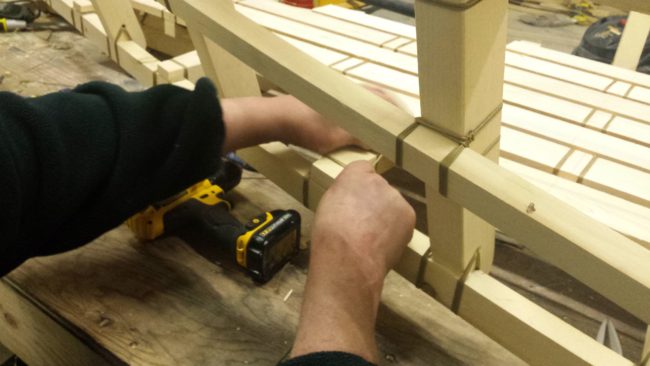
A group in Kodiak recently completed an Alutiiq boat that was last seen in the mid-19th century. Alutiiq people once used the angyaq to travel over long distances and through rough seas. It’s an open boat, like a dory, with a flat bottom and bulbous bow.
The artist leading the effort says the boat builders aren’t just recreating the past. They’re reviving a piece of Alutiiq history for use now and in the future.
CJ Christiansen saws the curved edge of a seat he’ll install in his angyaq.
This is the first time Kodiak has seen an angyaq in about 150 years. Christiansen says the last record of it was from a stranded British sailor’s first-hand account of his rescue in 1850.
The boat’s 21-inch frame sits on supports in the back room of a former grocery store that’s now mostly used for storage.
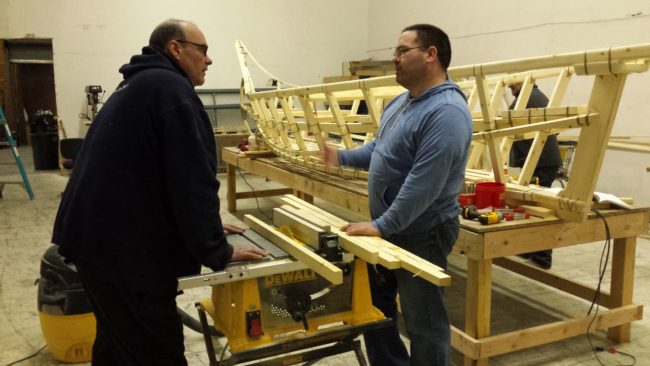
Christiansen, who has carved everything from masks to harpoons, says his interest in building the angyaq came from his desire to recover a piece of Alutiiq culture. He says angyaqs were a big part of Kodiak life.
“Anybody should be able to do this. It’s not that hard,” Christiansen said. “It just takes a lot of dedication and pride in what you’re doing. Making sure everything fits. It’s really just taking art to the next level, going from one small art form to something bigger.”
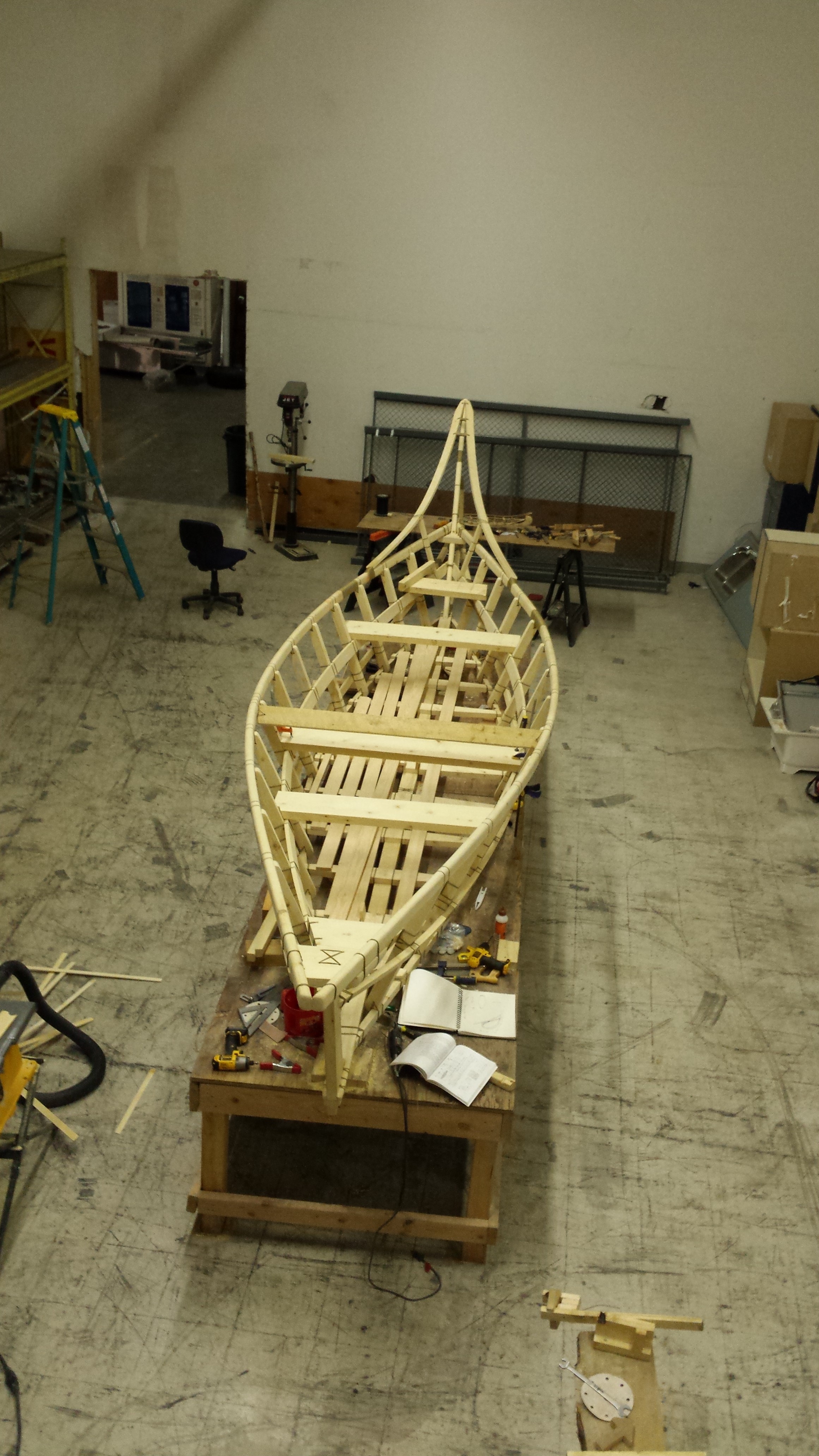
Christiansen says kayaks were the everyman boat, but angyaq were special to Alutiiq people.
The flat bottom and rounded bow would have helped it float up strong waves.
“They had winter and summer habitations here,” Christiansen said. “So in the summer when they went to put up all their fish and all their food for winter supply, they would pack up the village in one of these boats and move it down to their summer habitation and then be able to bring back all the fish they put up and everything.”
Christiansen says villages took the boat hundreds of miles, from the mainland to Southeast, all around Kodiak and the Aleutians.
He says there are only a few sources that prove the angyaq’s existence, which makes building it a challenge. The group partially used the Yup’ik boat, the umiak, as a guide.
“Cause our people are related to the Yupik, we’d looked at their boat designs and had a book on how they were building their boats, and we kinda took their designs and modified them to what our boats looked like,” Christiansen said.
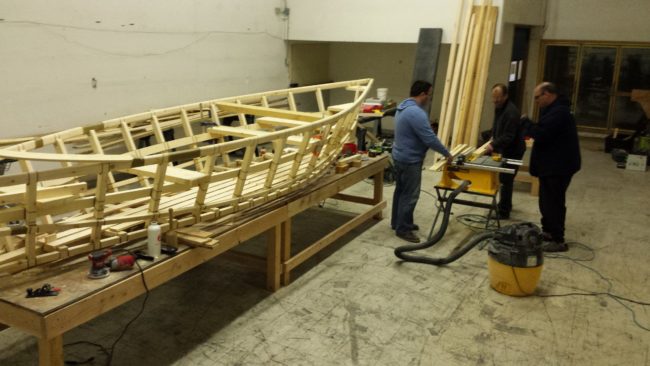
But, they also used one of the last remnants of the angyaq – wooden models Russian settlers took back home with them.
The models not only provide physical representations of the boat, but also reveal who might have owned them. Christiansen believes one family may have been responsible for the boat.
“Let’s see, there’s this picture of the boat, so you got the guy up there with the drum, the guy steering, and these guys all paddling, and then you see this guy here, see his hat?” Christiansen said. “Each one of these little rings is how many potlucks he gave. So, you know, three potlucks, he was a rich man, so he probably owned the boat.”
Christiansen says he and the other crafters put about 300 hours into the frame, but he says he was reluctant to track their progress from beginning to end. He didn’t want to fail.
But he says trial and error is the key to building a boat that hasn’t been seen for so many years.
“We might not got it 100 percent right, right now, but if more people start building ‘em and we start putting these in the water and taking them out and trying them, we’re gonna refine the design back to Russian time, pre-contact,” Christiansen said. “They were probably still refining it when they had contact…”
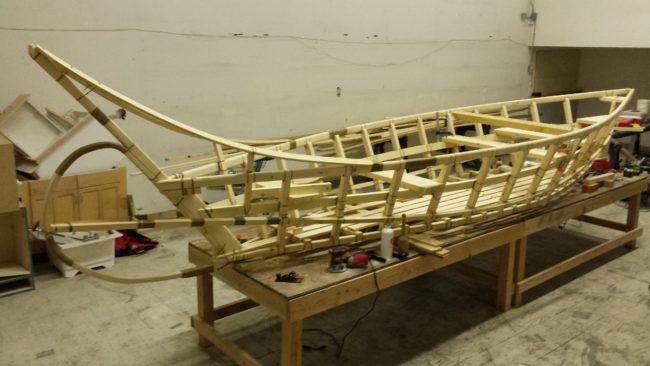
Christiansen says he wants to make this a boat for Alutiiq people now, not just recreate a relic from the past.
“To be building one… it’s just… an amazing journey for me to see this thing come to life,” Christiansen said. “You know, I don’t want to be the only one who makes one of these. Ten years down the road, I want to see everyone building them.”
He says he hopes people will even race angyaqs.
But first, they need to find a place for this one. Alisha Drabek is the Executive Director at the Alutiiq Museum. She says they’ll exhibit the boat outside the museum in mid May and then look for a permanent space. She says she’s proud to be able to showcase the boat.
“For the first one to be built in over a century, it’s amazing that it came together as quickly as it did, and they’re living the culture,” Drabek said. “They’re not doing this as part of a museum project. They’re doing it out of their hearts.”
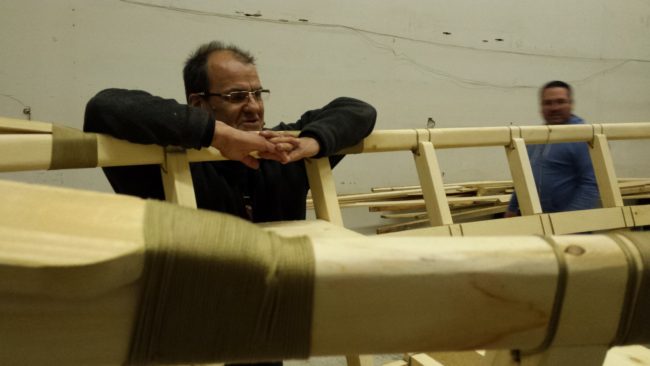
Back in the old grocery story, one of the group members is putting a finishing touch on the boat- securing part of the frame with twine.
Christiansen and his team are excited to see their work on display later this month. And eventually they hope to test out an angyaq in the waves around Kodiak.
